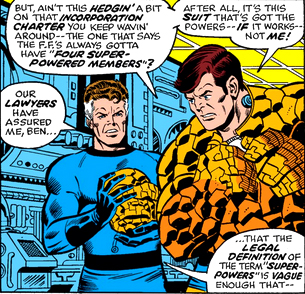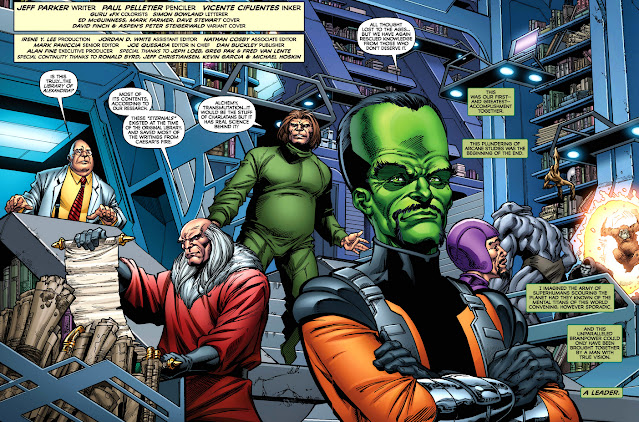OR: "It's Every Avenger For Himself!"
It was probably about five years past its original publication date of September, 1967* that I purchased a copy of the first Avengers Annual--a bargain at 10¢ from a used book store and, surprisingly, no missing pages, though its cover was tattered having apparently been passed around a bit. In those days, I was still collecting comics solely for the reading experience rather than with any intent to preserve them, so I considered the store owner's pile of late '60s comics (yes, a literal pile where old comics were tossed) quite a find in my area. That copy has since been bagged and boarded, even in its near-dilapidated state--a reminder of more innocent times, with no thought given to seeking out a more presentable copy to shelve by its side.
*The Annual's story takes place at the time of issues 43-44 of the regular series.
Of course, that eye-catching cover by regular Avengers artist John Buscema--along with the cover of the book's second annual in '68--unfortunately carried the distinction of being an example of textbook bait-and-switch, with Buscema's cover art being used to sell the annual while artwork by former book artist Don Heck awaited the reader within. Yet considering that the annual took four years from the series' launch to appear on the stands, and given that it clocks in at a whopping forty-nine pages (not including a few pages of bonus material), its story by Heck and writer Roy Thomas, featuring a fiendish plot by the Mandarin that included a host of past Avengers villains, was likely well received (though your mileage may vary if you opened the issue at home and were looking forward to Buscema handling the story).
(Yikes! No wonder the Avengers are in danger--their foes have become giants! Not to worry, however--this first page of the issue proudly took its place among other symbolic splash pages the Avengers were featured in.)
It's indeed the return of the Mandarin that happens to involve Iron Man in this story, as he responds to the prison breakout of Arthur Parks, the Living Laser (who faced the Avengers in his debut toward the end of 1966). And when Iron Man discovers that Parks might be working with his old enemy, he has sufficient cause to alert the team that he took a leave of absence from over two years prior.
Meanwhile, we're given a peek at the cause of Parks' mysterious disappearance, which proves that the Mandarin is indeed still alive--and whatever he's planning now, it will involve several other super-powered hirelings, as well as a device which will bring him closer than ever to world conquest.
(No, I don't know why Parks, teleported in his prison uniform, arrives at the Mandarin's lair in costume--and an upgrade from his old outfit, at that. My short answer is that the Mandarin may have been averse to having anyone else around him wearing a cape, and arranged to have his teleportation device outfit Parks in transit. Somehow.)
As for the Avengers, they're also contacted by Nick Fury, head of S.H.I.E.L.D., who requests their assistance with worldwide attacks that are out of SHIELD's jurisdiction as an American agency. (The "International Law Enforcement" part of his organization's acronym apparently having slipped his mind.)
The Mandarin doesn't look too worried, does he? He seems to be embracing the time-tested phrase "divide and conquer"--and before long, the Avengers will find themselves included in that adage.











































